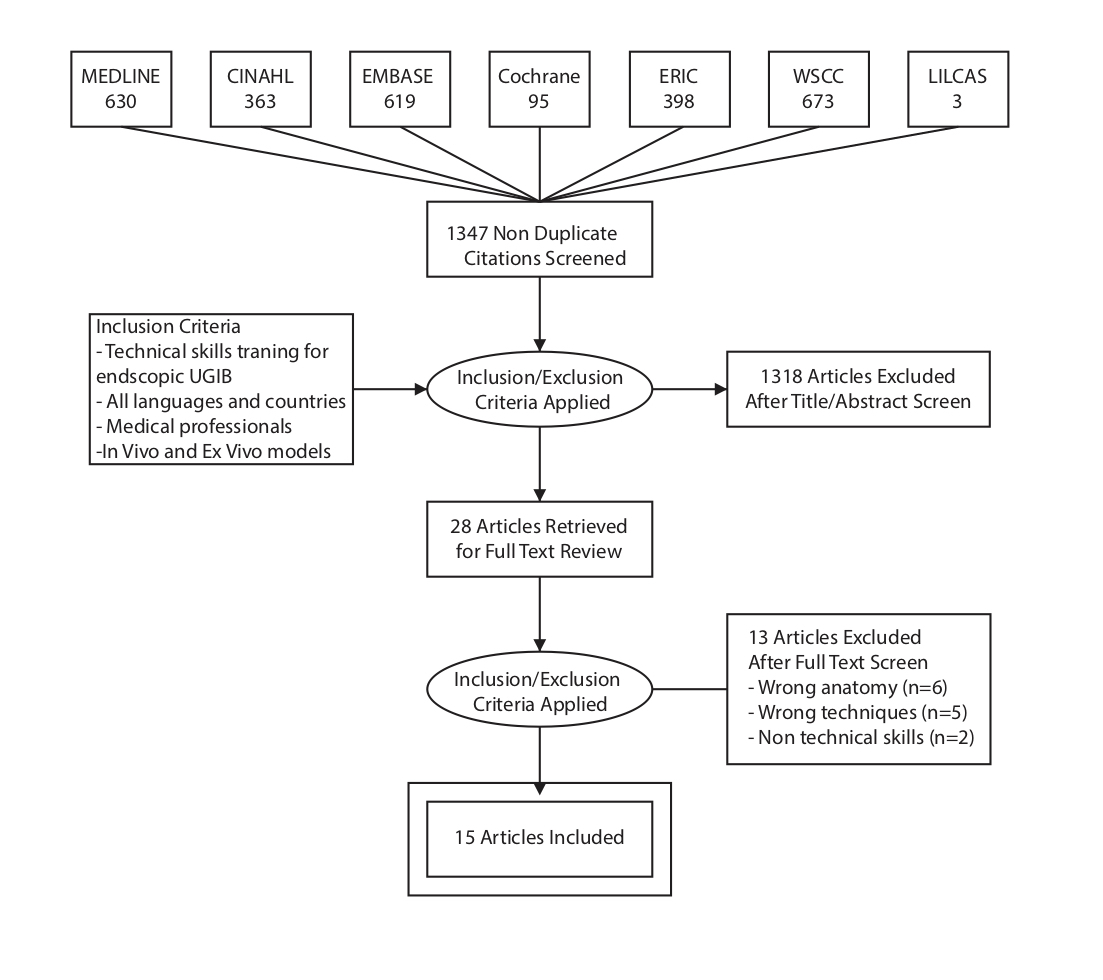TECHNICAL SKILLS TRAINING FOR THE ENDOSCOPIC MANAGEMENT OF NON-VARICEAL UPPER GASTROINSTESTINAL BLEEDING (NVUGIB): A SCOPING REVIEW OF QUANTITATIVE AND QUALITATIVE EVIDENCE
Shawn M. Purnell*1,2, Joseph J. Nguyen-Lee1, Sean M. Stokes2, Mary McFarland3, Tallie Casucci3, Brian J. Dunkin4, Daniel Vargo2
1Department of Surgery, Houston Methodist Hospital, Houston, TX; 2Division of General Surgery, University of Utah, Salt Lake City, UT; 3Spencer S. Ecceles Health Science Library, University of Utah, Salt Lake City, UT; 4Department of Surgery, The Houston Methodist Institute for Technology, Innovation, and Education (MITIE), Houston, TN
INTRODUCTION
Technical skills training for the endoscopic management of NVUGIB continues to prove challenging. Most training occurs during high-stakes, real-world cases supervised by a proctor resulting in significant variability in trainee case volume, autonomy, and guidance across institutions. As a result, a low-cost, readily available, effective simulator is needed for deliberate practice in managing NVUGIB. In preparation for creation of such a simulator, we conducted a scoping review to identify available training models for NVUGIBs and assess their effectiveness.
METHODS
The scoping review was conducted in accordance with the framework developed by Arksey and O'Malley, and utilized the PRISMA_ScR checklist for reporting guidance. MEDLINE, EMBASE, Cochrane, LILACS, ERIC, and Web of Science searches were conducted focusing on endoscopy of the upper gastrointestinal tract, bleeding, and training utilizing subject headings and key words. Covidence was used to screen articles by three independent reviewers and standardized data extraction was performed in Excel (Figure).
RESULTS
Fifteen studies were identified: 5 randomized control trials (RCTs), 5 quasi-experimental studies, and 5 reviews. Of the RCTs and quasi-experimental studies, techniques for endoscopic hemostasis included injection (9/10), clip application (9/10), and electrosurgery (7/10). Two in-vivo and two ex-vivo porcine models were described (EASIE and CompactEASIE). Two in-vivo studies demonstrated realistic and reproducible NVUGIBs, but no utility in improving trainees' technical skills. CompactEASIE was the most studied simulation model (8/10) and developed from the EASIE as a lightweight, more practical alternative with comparable function. RCTs have shown that a structured training curriculum using the CompactEASIE significantly improved the ability of GI fellows to gain hemostatic control of NVUGIBs in both simulated and real clinical settings. Additionally, CompactEASIE training significantly improved novice interventional endoscopy skills and was capable of improving performance of hemostasis procedures in a 1-day training course. Studies are ongoing to further elucidate simulation training effects on clinical outcomes and assess the need for refresher simulation training.
CONCLUSION
Only four simulation models are described in the literature for managing NVUGIB. Two require use of a live porcine model and have not demonstrated training utility. Two use ex-vivo porcine tissue and, when incorporated into a structured training curriculum, significantly improve performance of endoscopic management of NVUGIBs by participants of varying experience. All four models are limited by high cost, accessibility, and a requirement for specialized ancillary staff. This work serves as a needs analysis for a better simulation platform to rehearse management of NVUGIBs.
Back to 2019 Posters




